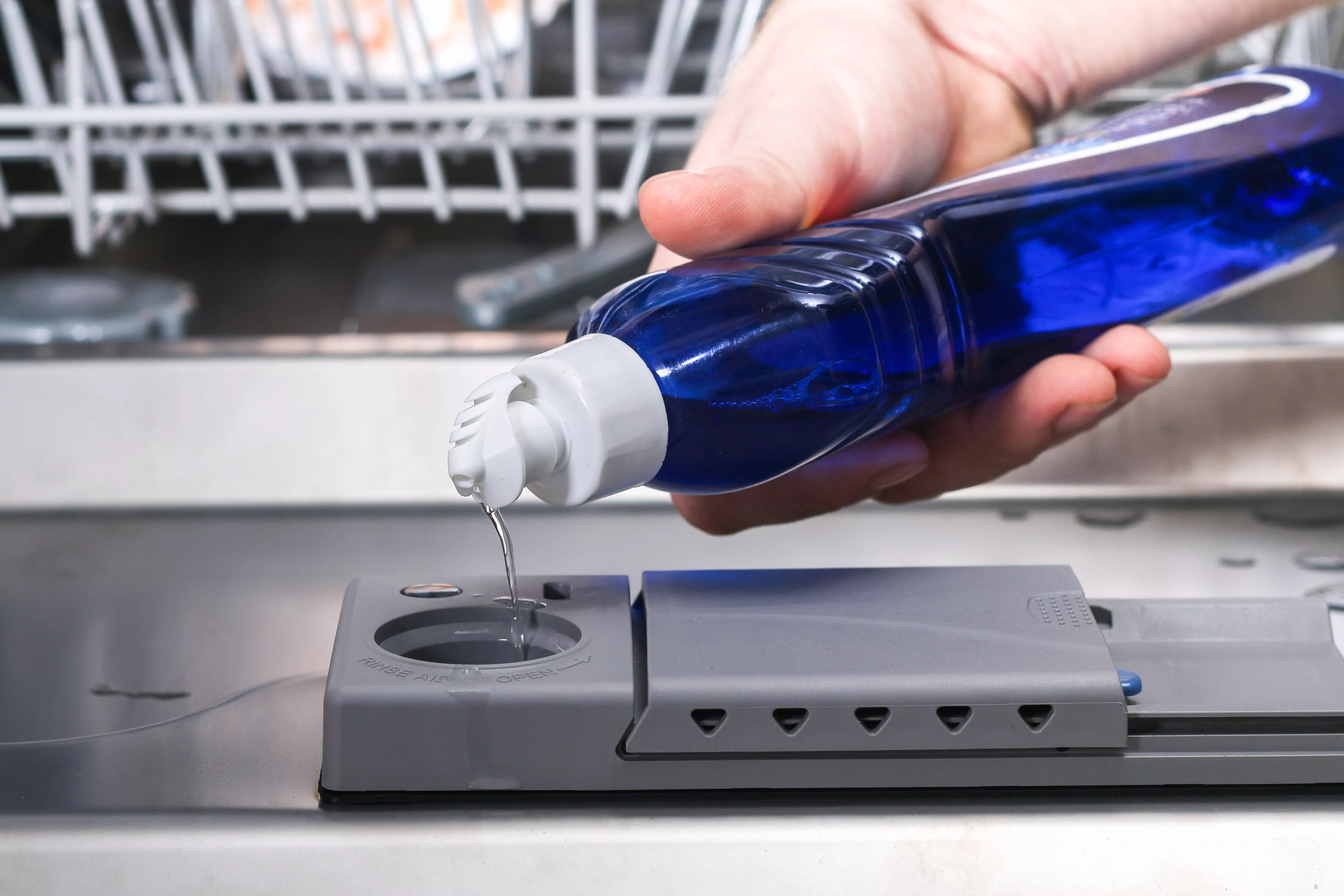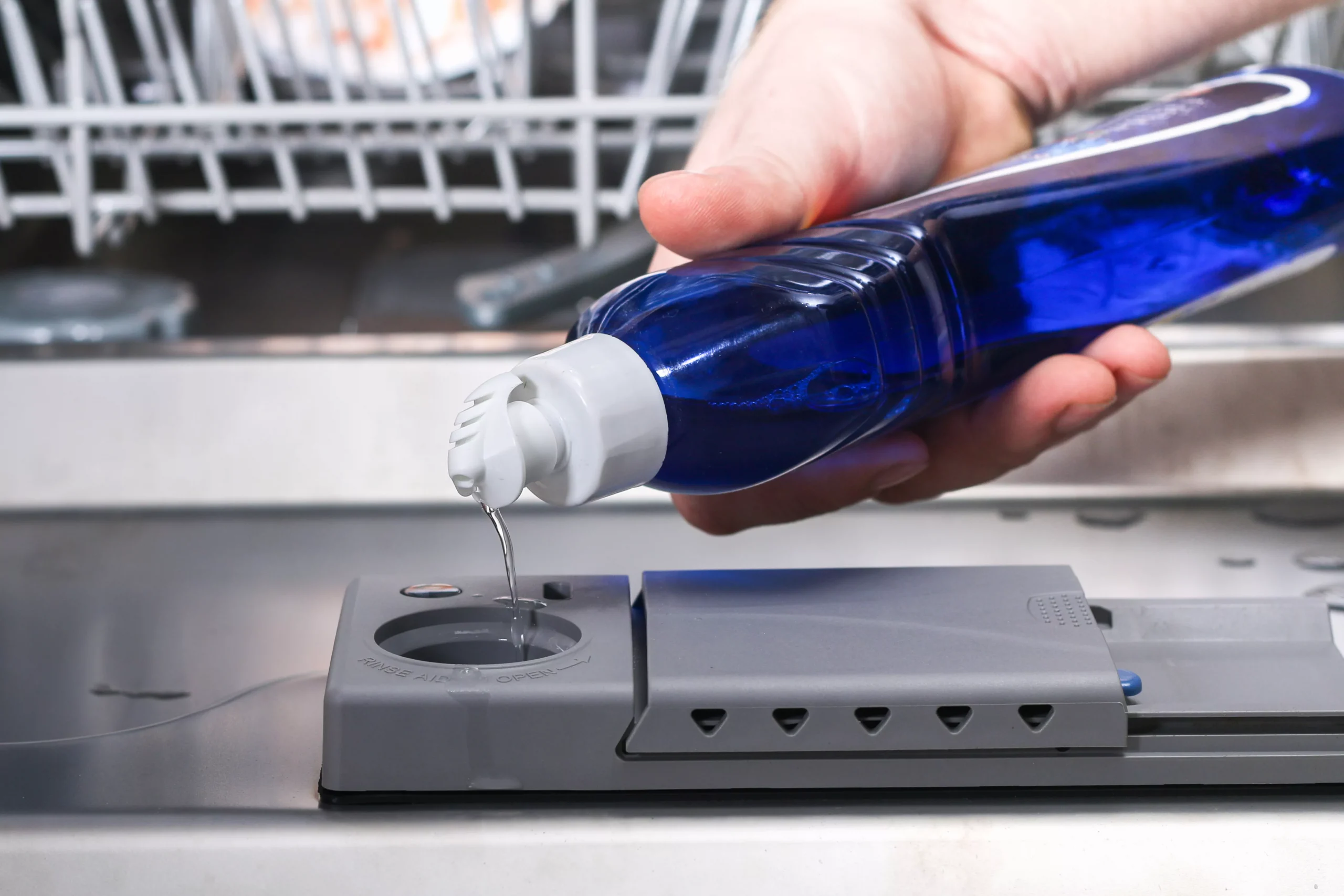
When it comes to utilizing a dishwashing machine, a lot of attention is paid (and a terrific many viewpoints used!) to packing the device correctly. However ensuring that dishes come out of the dishwashing machine area- and streak-free takes more than simply correct loading. If you aren’t utilizing a rinse help, opportunities are that even the most flawlessly filled dishes will come out looking less than tidy.
But what exactly is rinse aid? And is rinse help an item you need to be using?
What Is Rinse Aid?
Rinse help is a bit of a misnomer– a more precise name would be ‘dry help’ due to the fact that rinse aid is actually a drying representative. Wash help improves the function of a dishwashing machine by increasing the device’s drying function, leaving meals dryer and with less water areas.
Rinse aid is a standalone liquid product that is acquired independently from dishwashing machine cleaning agent. Lots of detergent packs include a small quantity of rinse help, routine rinse aid ought to still be utilized to promote much better drying.
How Rinse Aid Works and How to Use It
Wash aid is a surfactant– it works by decreasing the surface area tension of water, enabling it to move off meals, aiding draining pipes in the dishwasher.
Rinse help is given during the last rinse cycle. It promotes much better drying by helping water run of dishes and the within the dishwasher, leaving dishes dryer and minimizing water areas, streaks, and chalky white residue. Wash help likewise assists the heat-dry alternative perform much better.
To utilize it, fill the rinse help dispenser, which is generally located on or next to the cleaning agent dispenser, to maximum capacity and close it. The dishwasher will immediately dispense the rinse aid throughout the last rinse cycle.
Some dishwasher models do not have a rinse help dispenser, in which case you can acquire a different rinse aid basket that hangs from the top rack of the dishwashing machine. While numerous cleaning agent pack formulas include a percentage of rinse help, it is still advised that you use a liquid rinse aid, either in the dispenser or in a standalone rinse help basket, to promote better drying.
Who Should Use Rinse Aid?
A lot of homes will gain from using a rinse aid in the dishwasher. Particularly, if you observe the following things on dishes after utilizing your dishwasher, it is a signal that a rinse aid is required:
Water spots
Streaks
Filmy residue
White, milky residue
Scale or mineral deposits
Excessive wetness or puddling
Additionally, if you reside in a location with difficult water, using a rinse help is vital to preventing the buildup of mineral deposits on your dishwasher. Numerous dishwashing machines allow you to change the amount of rinse aid gave into the rinse cycle; if hard water is a concern where you live, or if you see that there are rings or calcium areas from tough water on dishes, adjust the setting to give more rinse help.
Alternatives to Rinse Aid
You may have read that distilled white vinegar can be used as an option to wash help, and while it does have residential or commercial properties that assist to reduce the appearance of water areas and mineral deposits, it is not recommended for regular use in dishwashing machines. Distilled white vinegar is extremely acidic and, in time, exposure to acids can harm the dishwasher’s rubber parts like tubes and gaskets. Therefore, we strongly suggest utilizing a rinse aid particularly developed to be safe on dishwashing machines.
There are likewise some methods to utilize your dishwashing machine to enhance its functionality:
Load dishes at an angle to encourage water to run off
Leave space between meals so that they are not touching
Reduce the quantity of plastic in the load
Utilize the right quantity of cleaning agent
Utilize the heated dry setting
When unloading, begin with the bottom rack
Unload plastic products last
If you reside in an area with tough water, setting up a water conditioner can assist to address the issue at the root. Water softening systems can be costly, with a typical cost of $1,500 according to HomeAdvisor, but if the water in your house has a solidity of over 7 grains per gallon (GPG) it can be a beneficial investment. A water softener will improve the quality of your house’s water, making it gentler on skin, hair, clothing, household linens like sheets and towels, along with on significant home appliances and pipes.
How Often to Use Rinse Aid
Rinse help is instantly dispensed throughout the dishwashing machine’s rinse cycle, so as long as the giving chamber remains filled, you do not need to fret about adding it to each wash cycle.
A lot of dispensers have a 5-ounce capacity, designed to hold a month’s worth of rinse aid for an average-sized family with common dishwasher usage. Most people will find that they require to fill up the rinse help once a month; if your family has atypical dishwasher use, you can top the rinse aid off on an as-needed basis.




